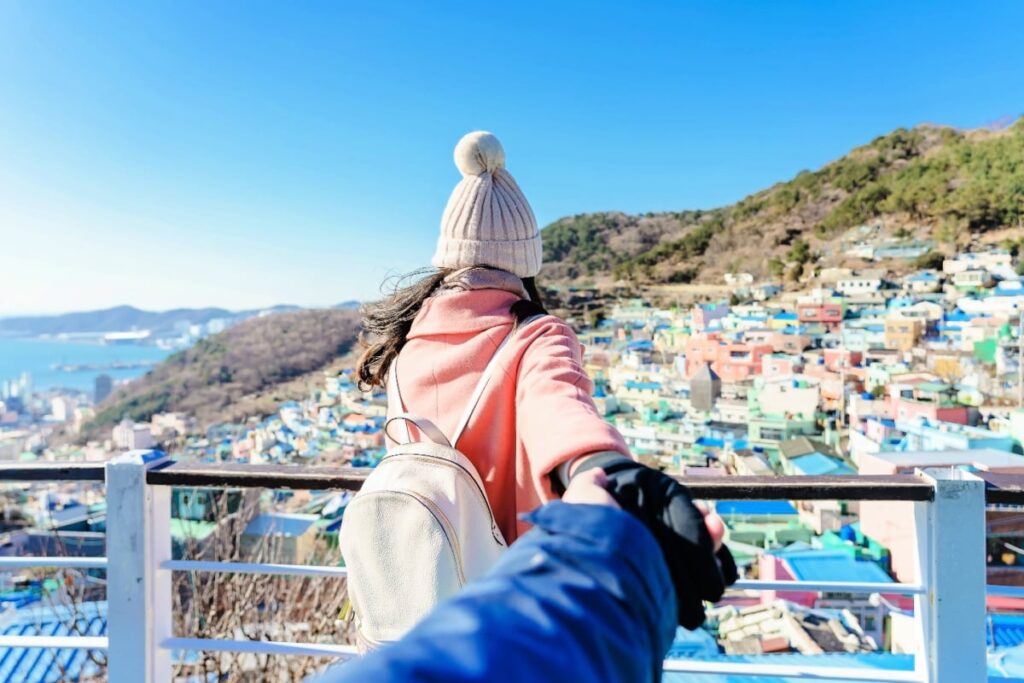No products in the cart.
Travel Guide
Why This Lesser-Known Coastal City In Asia Is Perfect For Digital Nomads
Last Updated
South Korea is one of the top destinations in Asia for digital nomads right now, having developed into a major ‘soft power’ in recent years, following the export of K-pop, doramas, and other art forms, and trending for its high-quality of life and relative affordability.
With that being said, most nomads landing in the East Asian country stay in Seoul, its vibrant capital and largest metropolis, and end up staying most of their time there, ignoring secondary destinations that are just as incredible.

As it turns out, Seoul is not Korea’s only nomad hotspot, as an equally strong competitor on the Southeastern coast has been surging in popularity lately:
Everybody, Meet Busan
When it comes to South Korea’s digital nomad scene, Seoul often gets all the attention, and it’s understandable.
It is the largest city, after all, boasting high-speed internet connectivity, great transport links, and unparalleled entrepreneurial atmosphere, but it is certainly not the only world-class Korean metropolis or creative hub.

Busan, on the Southeastern coast, is the country’s second-largest city and a busy port with over 3.4 million residents, and it is just as well-equipped a nomad destination as Seoul, except it straddles the ocean. It is smaller and can feel a lot less chaotic.
Here, you will find the same world-class urban infrastructure, with an excellent public transportation system that will get you anywhere you need within the Metropolitan Area, increasingly pedestrianized central districts, affordable housing and an ample selection of coworking centers.
Why Is Busan Unique?

Busan is unique in the sense that it is a sprawling metropolis bounded by both mountains and the sea, snaking along narrow valleys, following the course of the historic Nakdong and Sueyong Rivers, and also lining the oceanfront.
Infrastructure-wise, it may be comparable to Seoul, but it has an entirely different character altogether. Being surrounded by nature, it can feel more laid-back, and not as hectic as the 10 million-people strong inland capital.
The aforementioned Nakdong River is Korea’s longest, and one of the most popular activities in Busan is walking the Nakdonggang Riverside Trail, a multi-lane boardwalk for pedestrians and cyclists.

The trail spans, in fact, most of the extent of the river, which is 230 kilometers long, thus linking Busan to Andong, a city in the Northern part of South Korea, but within Busan proper, it makes for a peaceful promenade from the downtown area to the outer suburbs.
Busan Has Beautiful Beaches
Busan is also highly sought-after for its beaches, being lapped by long, soft, golden-sand crescents, and home to the iconic Haeundae Beach, South Korea’s largest and best-frequented.

During the summer months, Haeundae is brimming with life and sunbathers looking to catch a tan beneath the unforgiving East Asian sun.
In the off-season, particularly spring and fall, it is ideal for contemplative, early-afternoon walks on the sand and admiring the sweeping views of Busan’s maritime port further in the distance, one of the largest and most economically important in the world.
Needless to say, the ocean is a huge part of Busan’s appeal to long-term visitors. The city’s economy is heavily reliant on ocean trade, and as a result, the seaside is highly developed.

Other than beaches, nomads get to enjoy seaside parks in their free time, like Taejongdae, where hiking trails and viewing platforms offer unique perspectives of the rugged coastline, marvel at landmark bridges – including Korea’s second-largest – and gorge on some delicious seafood.
Busan is arguably South Korea’s foodie capital, and there is no way you can conclude your nomadic stay without having sampled classics like seafood porridge, soy-marinated raw crabs, or sliced raw fish from local seafood markets.
Another reason why Busan is trending with nomads is its cultural weight.
Busan Is An Underrated Cultural Hotspot

Yes, it is a modern maritime port and financial center, but beneath the surface lies a far older, more traditional Korean settlement that is yet to be fully eradicated by the rapid industrialization of the Korean coast.
One of Busan’s top cultural attractions is Gamcheon Village, a hillside district where the tiny, agglutinated houses are painted in bright colors and the narrow alleys are lined with vibrant street art and other whimsical installations, in a similar manner to South America’s underdeveloped barrios.
Busan also houses Beomeosa Temple, a picturesque Buddhist complex nestled on a hilly, forested area away from the clusters of skyscrapers and towering apartment blocks.

An ancient gem of Korea, it was founded as early as 678 AD, and it stands among the most easily-recognized Korean architectural feats globally.
Nomads are enamored with Busan because it is a city that just oozes creativity, and its public transportation is solid proof of that.
Busan’s Creative Vibes Are Unparalleled
No visit to Busan is complete without a scenic journey on a Haeundae Sky Capsule, a 4-seater retro tram with a colorful exterior – usually electric blue, deep red, light yellow and green, running on a 2.3 km-long elevated rail linking the beach zones of Mipo to Cheongsapo.

The colors emulate that of the accompanying Haeundae Beach Train, which travels along the scenic oceanfront between Mipo and Songjeong, and it’s the world’s first battery-charged and perhaps one of the most eco-friendly transportation modes.
Busan’s numerous monorails are yet another fun way to get around and explore, traveling upward the hilly cityscape and revealing breathtaking panoramas of the lively streets below.
Naturally, one of the main reasons why nomads are flocking to Busan is the affordable living.
Busan Is More Affordable Than Seoul

Rent in Busan can be up to 71.2% lower than in Paris, a major digital nomad hotspot in the Western World, as seen on Numbeo, and a single person’s estimated monthly expenses are US$919.70 without rent.
You should expect to find street food for as cheap as US$6.07, on average, and a restaurant bill for two people in a mid-range restaurant should total roughly US$31.29 roughly.
These often reflect prices for locals and long-term visitors.

According to BudgetYourTrip, short-term travelers spend on average US$88 per day in Busan, with an average US$26 on meals and US$21 on public transportation, making it a relatively affordable destination to work from remotely for a limited period of time.
Seoul can be considerably more expensive, with estimated daily expenses for tourists averaging US$109 daily.
Though South Korea has not yet launched a Digital Nomad Visa, U.S. passport holders can enter the country and stay visa-free for up to three months.
Read More:
Top 5 Travel Insurance Plans For 2023 Starting At $10 Per Week
How To Easily Earn Points For Free Travel
↓ Join Our Community ↓
The Travel Off Path Community FB group has all the latest reopening news, conversations, and Q&A’s happening daily!

SUBSCRIBE TO OUR LATEST POSTS
Enter your email address to subscribe to Travel Off Path’s latest breaking travel news, straight to your inbox.
This article originally appeared on TravelOffPath.com
Source link

